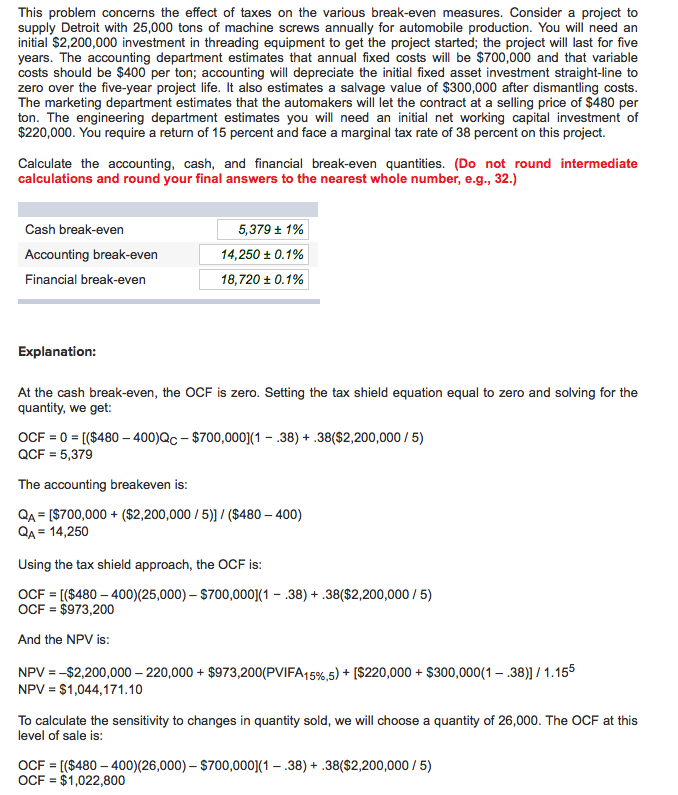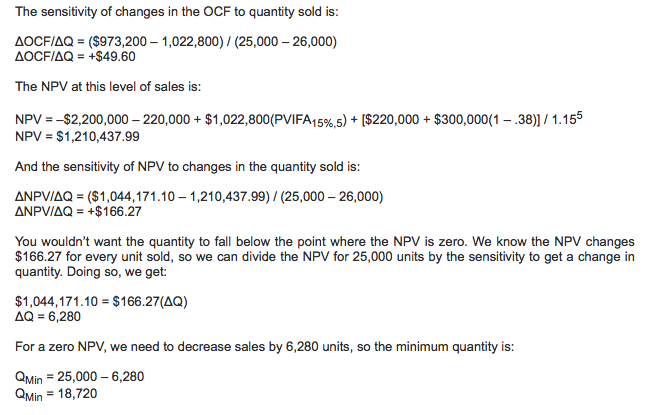Question
This problem concerns the effect of taxes on the various break-even measures. Consider a project to supply Detroit with 30,000 tons of machine screws annually
This problem concerns the effect of taxes on the various break-even measures. Consider a project to supply Detroit with 30,000 tons of machine screws annually for automobile production. You will need an initial $4,400,000 investment in threading equipment to get the project started; the project will last for three years. The accounting department estimates that annual fixed costs will be $650,000 and that variable costs should be $250 per ton; accounting will depreciate the initial fixed asset investment straight-line to zero over the three-year project life. It also estimates a salvage value of $260,000 after dismantling costs. The marketing department estimates that the automakers will let the contract at a selling price of $390 per ton. The engineering department estimates you will need an initial net working capital investment of $440,000. You require a return of 18 percent and face a marginal tax rate of 30 percent on this project.
Calculate the accounting, cash, and financial break-even quantities. (Do not round intermediate calculations and round your final answers to the nearest whole number, e.g., 32.)
BELOW IS AN EXAMPLE OF A SIMILIAR PROBLEM


Step by Step Solution
There are 3 Steps involved in it
Step: 1

Get Instant Access to Expert-Tailored Solutions
See step-by-step solutions with expert insights and AI powered tools for academic success
Step: 2

Step: 3

Ace Your Homework with AI
Get the answers you need in no time with our AI-driven, step-by-step assistance
Get Started


